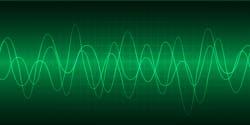Phase Noise Analysis has traditionally been a smaller sector of the electronics test and measurement market, primarily being a parameter that was verified by defense radar systems providers. With the rapid growth of high-speed communications markets, everyone from chipset manufacturers to complete systems providers have been adopting phase noise as the key parameter for quantifying RF signal stability performance. Furthermore, phase noise can be quickly converted to jitter, enabling a reliable method for rapid jitter analysis for time domain applications.
This content is sponsored by:

